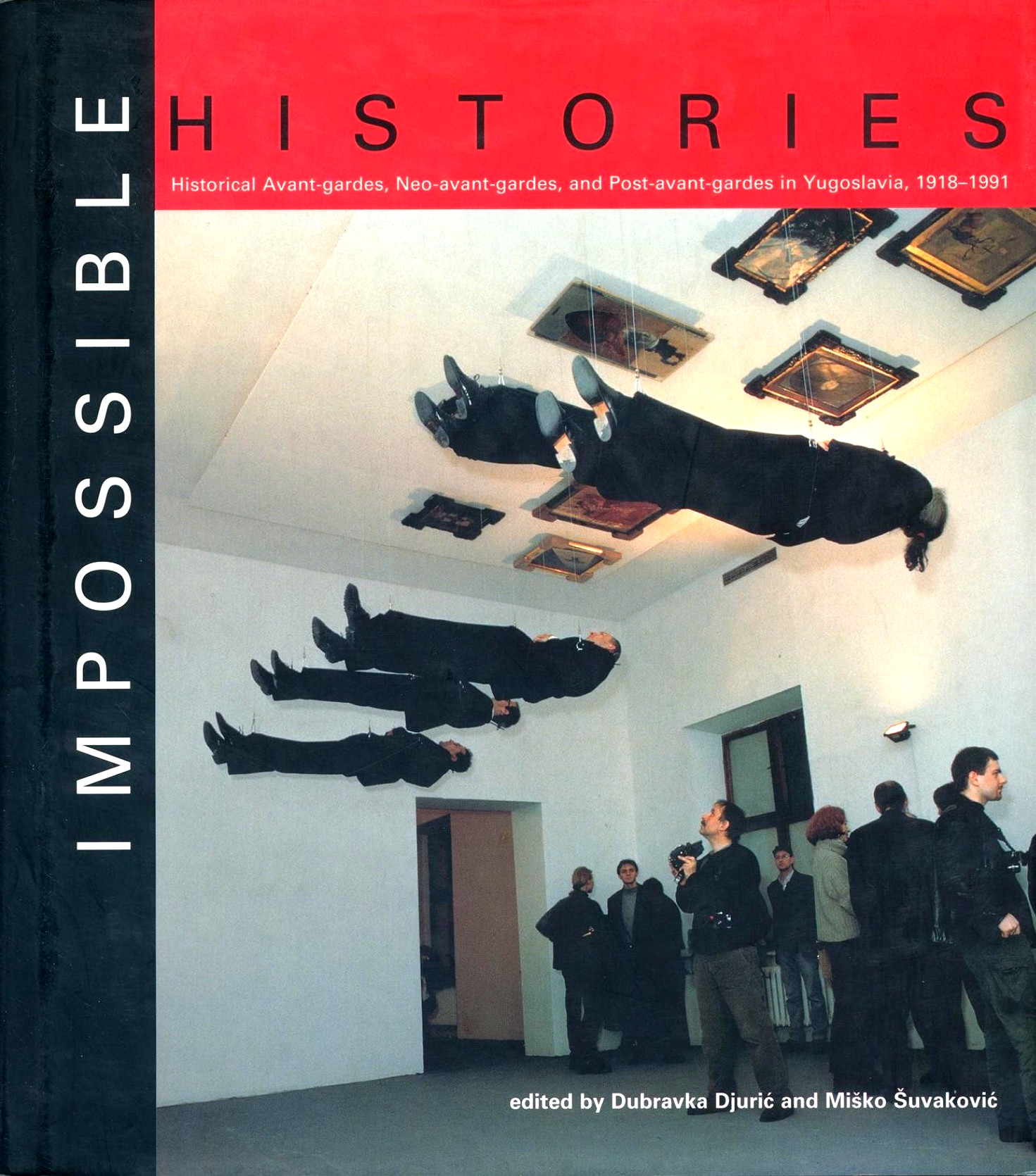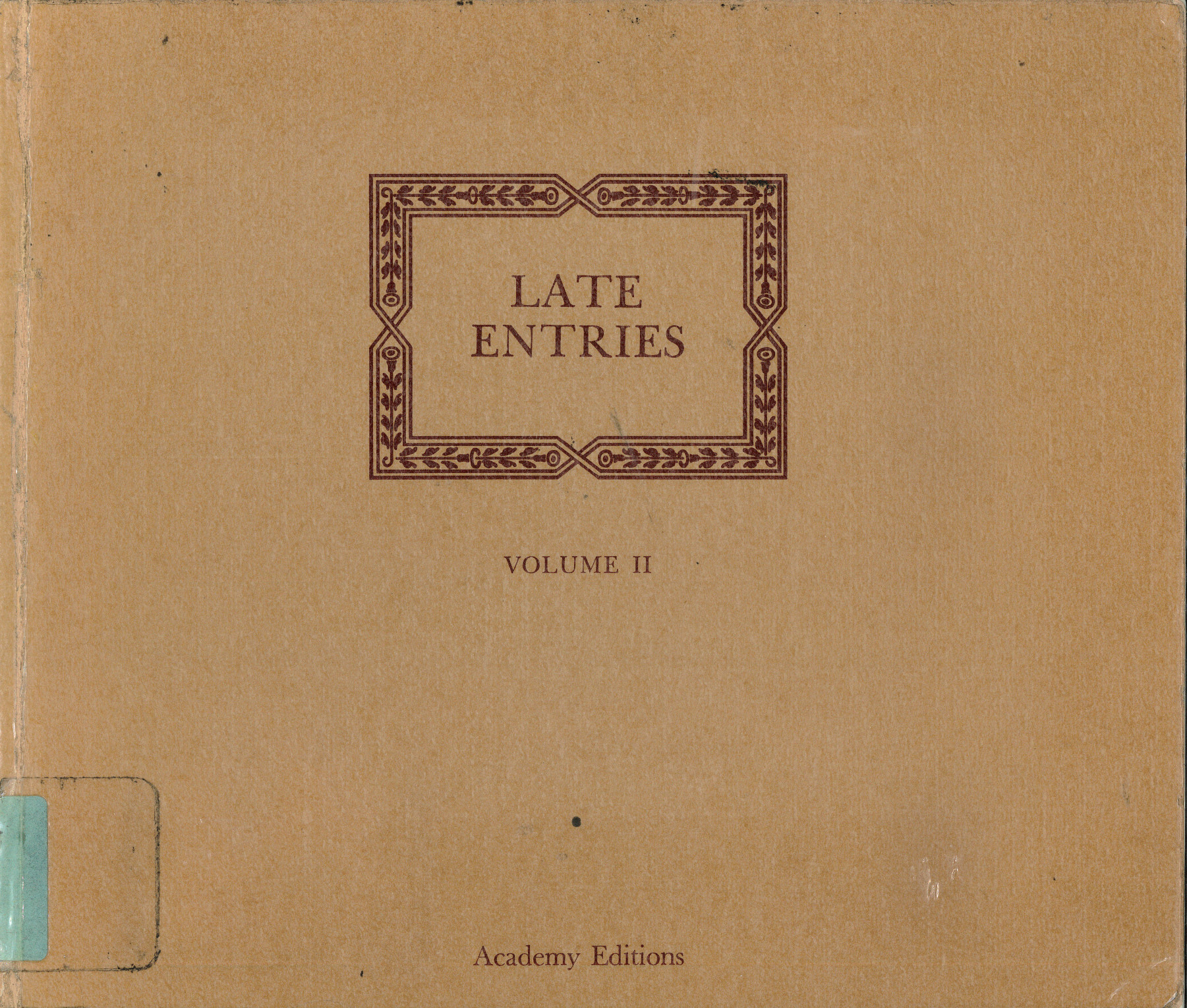Dubravka Djurić, Miško Šuvaković (eds.): Impossible Histories: Historical Avant-gardes, Neo-avant-gardes, and Post-avant-gardes in Yugoslavia, 1918-1991 (2003)
Filed under book | Tags: · architecture, art history, avant-garde, conceptual art, literature, manifesto, music history, neo-avant-garde, post-avant-garde, postmodern, retro-avant-garde, video art, yugoslavia

“Impossible Histories is the first critical survey of the extraordinary experiments in the arts that took place in the former Yugoslavia from the country’s founding in 1918 to its breakup in 1991. The combination of Austro-Hungarian, French, German, Italian, and Turkish influences gave Yugoslavia’s avant-gardes a distinct character unlike those of other Eastern and Central European avant-gardes. The book explores movements such as Belgrade surrealism, signalism, Yugo-Dada, and zenitism; the groups Alfa, Exat 51, Gorgona, OHO, and Scipion Nasice Sisters Theater; or the magazines Danas, Rdeči pilot, Tank, Vecnost, and Zvrk.
The pieces in this collection offer comparative and interpretive accounts of the avant-gardes in the former Yugoslavian countries of Croatia, Serbia, and Slovenia. The book is divided into four sections: Art and Politics; Literature; Visual Art and Architecture; and Art in Motion (covering theater, dance, music, film, and video). All of the contributors live in the region and many of them participated in the movements discussed. The book also reprints a selection of the most important manifestos generated by all phases of Yugoslav avant-garde activity.”
Publisher MIT Press, 2003
ISBN 0262042169, 9780262042161
xviii+605 pages
via agitprop
Reviews: Suzana Milevska (Springerin, 2004), Matthew S. Witkovsky (caa.reviews, 2004), Yevgeniy Fiks (Art Journal, 2004), Tyrus Miller (Modernism/modernity, 2005), Igor Marjanović (Design Issues, 2007).
PDF (22 MB)
Comment (0)Marc James Léger (ed.): The Idea of the Avant Garde: And What It Means Today (2014)
Filed under book | Tags: · activism, aesthetics, architecture, art criticism, art history, avant-garde, film, intermedia, literature, music, performance, photography, theatre

“This book is premised on the view that the idea of the avant garde has an increased importance in these times of global political crisis. Much cultural production today is shaped by a biopolitics that construes all creative and knowledge production in terms of capital accumulation. A different kind of culture is possible. This collection of writings, essays, interviews and artworks by many of today’s most radical cultural practitioners and astute commentators on matters avant garde mediates the different strategies and temporalities of avant-garde art and politics. Tracing diverse genealogies and trajectories, the book offers an inter-generational forum of ideas that covers different arts fields, from visual art, art activism, photography, film and architecture, to literature, theatre, performance, intermedia and music.”
Texts by Marc James Léger, Adrian Piper, Andrea Fraser, David Tomas, Catherine Lescarbeau, Hal Foster, Laura Mulvey, Bruce LaBruce, Santiago Sierra, Derek Horton, Christine Wertheim, Lyn Hejinian, Marjorie Perloff, Wu Ming 2, Nikolaus Müller-Schöll, Rabih Mroué, Judith Malina, Moe Angelos, Bill Brown, The Errorist International, Jonas Mekas, Thomas Elsaesser, Alexander Kluge and Oskar Negt, Travis Wilkerson, Evan Mauro, Mikkel Bolt Rasmussen, Gene Ray, John Roberts, Zanny Begg and Dmitry Vilensky, Owen Hatherley, Michael Webb, Mitchell Joachim, Beatriz Colomina, Boris Groys, Vitaly Komar, Victor Tupitsyn, Gregory Sholette and Krzysztof Wodiczko, Critical Art Ensemble, BAVO, Alexei Monroe, Jean-Hervé Péron, Chris Cutler, Charles Gaines, Jason Robinson, Sara Marcus, Cosey Fanni Tutti, Thanos Chrysakis, Kim Cascone, Marc Couroux, Thérèse Mastroiacovo, Chrysi Papaioannou, and Bill Dane.
Publisher Manchester University Press, Manchester, with Left Curve, Oakland, CA, 2014
ISBN 9780719096914, 071909691X
285 pages
Editor
Exhibition (2018)
Publisher
WorldCat
PDF (16 MB)
Comment (0)Tribune Tower Competition, 2 vols. (1923/1980)
Filed under book | Tags: · architecture, avant-garde, skyscraper


In 1922, 75th anniversary of the Chicago Tribune, co-publishers Robert R. McCormick and Joseph M. Patterson announced a design contest for the newspaper’s new quarters in hopes of creating an architectural representation of the radical philosophies held by the editors. The competition was thought to represent the contemporaneous state of architecture and has always been regarded as a milestone of American architecture and a point of first contacts with interwar European avant-gardes. The contestants, who came form all over the world, borrowed freely from the Greeks, Romans, the Middle Ages and the Renaissance.
The winner was a neo-Gothic design by New York architects John Mead Howells and Raymond Hood, with buttresses near the top. The entry that many perceived as the best, by the Finnish architect Eliel Saarinen, took second place. Saarinen’s tower was preferred by architects like Louis Sullivan, and was a strong influence on the next generation of skyscrapers including Raymond Hood’s own subsequent work on the McGraw-Hill Building and Rockefeller Center. The 1929 Gulf Building in Houston, Texas, designed by architects Alfred C. Finn, Kenneth Franzheim, and J. E. R. Carpenter, is a close realization of that Saarinen design. Other Tribune tower entries by figures like Walter Gropius, Bertram Goodhue, Bruno Taut, and Adolf Loos remain intriguing suggestions of what might have been, but perhaps not as intriguing as the one surmounted by Rushmore-like head of an American Indian. The book contains documentation of all 281 entries from 23 countries.
The 1980 counterpart to the Tribune competition was not intended as a competition at all, but as an exhibition of architects from all over the world. Unlike the original competition, this was an invitation only endeavor, and over 100 architects were invited. The exhibition, The Late Entries to the Chicago Tribune Competition, was an idea by architect Ben Weese further developed by architects Stanley Tigerman, Stuart E. Cohen and the owner of the Young Hoffman Gallery in Chicago, Rhona Hoffman. Participants were asked to present a point of view or theoretical position, as well as represent a cross-section of progressive western thought. The outcome was that the styles, media, colors and intentions ranged greatly. Submissions to Late Entries did not limit themselves to functional buildings, but also to metaphorical and imaginary designs, and included designs by Tadao Ando, Frank Gehry, Helmut Jahn, Gaetano Pesce, Bernard Tschumi, Lebbeus Woods and many others.
Volume 1 first published as The International Competition for a New Administrative Building for the Chicago Tribune, MCMXXII: Containing All the Designs Submitted in Response to the Chicago Tribune’s $100,000 Offer Commemorating Its Seventy Fifth Anniversary, June 10, 1922, Tribune Company, 1923.
Volume 2 by Stanley Tigerman; with an Introduction by Stuart E. Cohen; and Critical Essays by George Baird, Juan Pablo Bonta, Charles Jecks, Vincent Scully and Norris Kelly Smith.
Publisher Academy Editions, London, 1980
189 & 113 pages
via aldo coffee
Commentary: Paul Gapp (Chicago Tribune, 1980).
Wikipedia
Volume 1 (1923/1980, 222 MB)
Late Entries (Volume 2) (1980, 104 MB, pages 64-79 missing)

